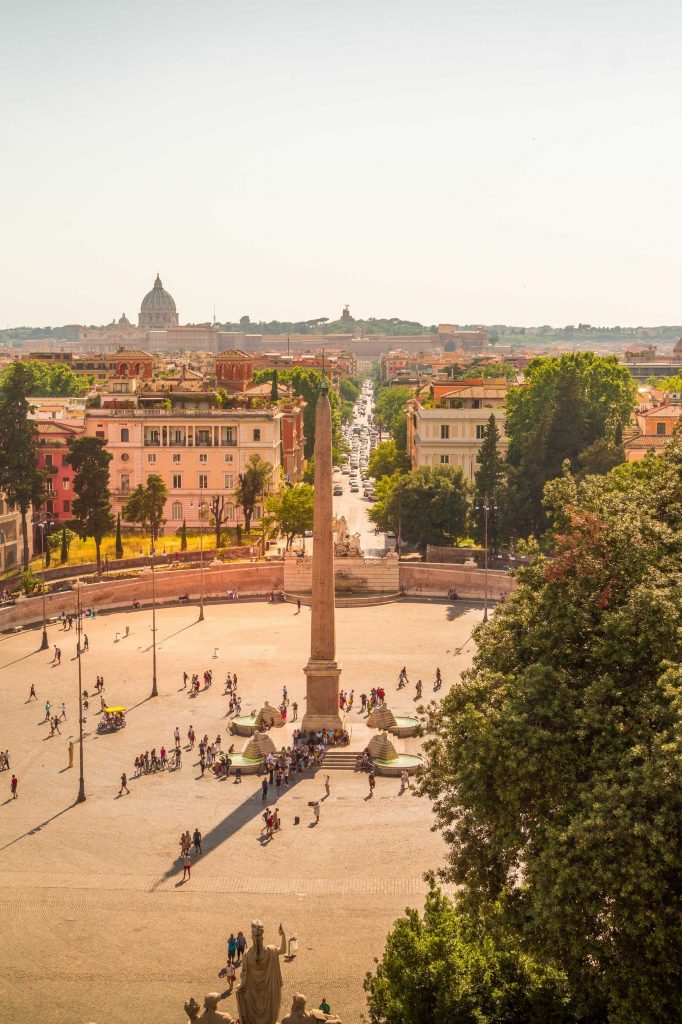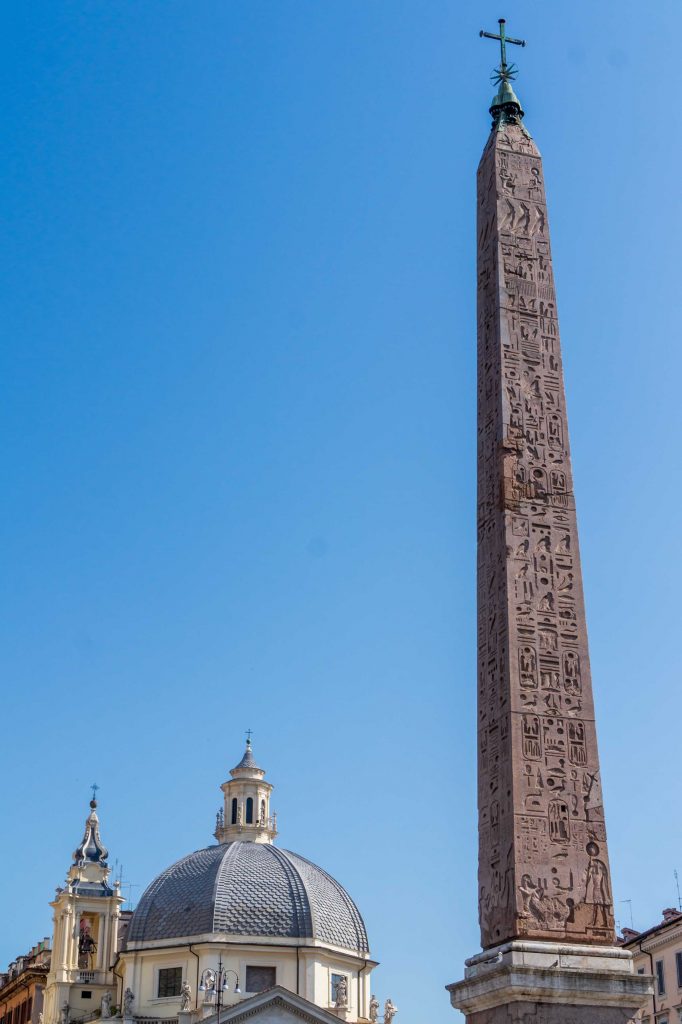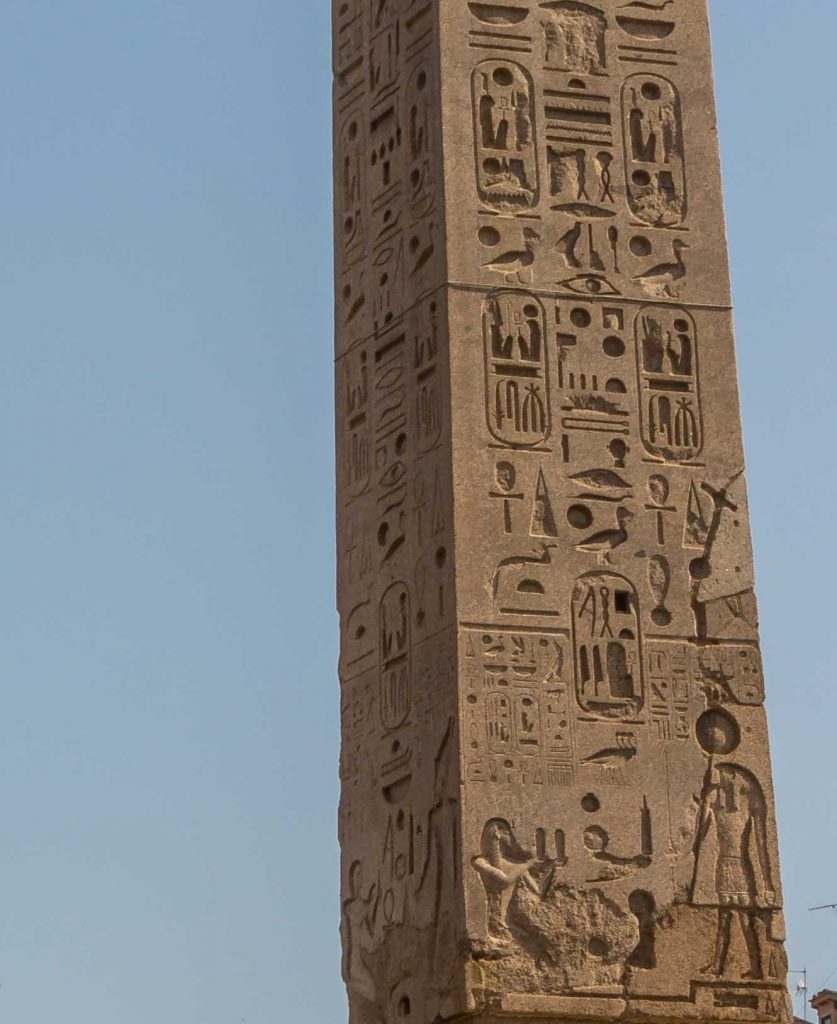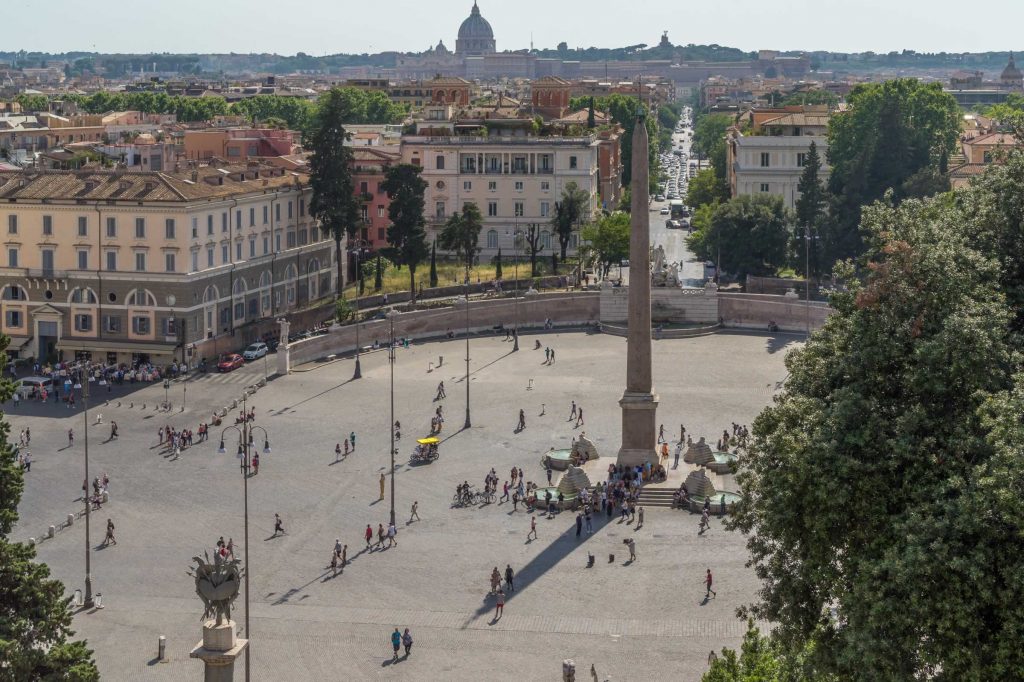Last Updated on: 15th September 2023, 07:31 am
The Flaminio Obelisk is one of the most recognizable ancient Egyptian obelisks in Rome, next to Obelisco Agonale in Piazza Navona.
Also known as the Piazza del Popolo Obelisk, this 25-meter tall granite monument dates back to the 13th century BC. It originally stood in the ancient Egyptian city of Heliopolis.
In this comprehensive guide, you’ll learn about the history of the Flaminio Obelisk, why it was brought to Rome, exactly where to find it, and how to visit this iconic landmark.

Main Topics of The Flaminio Obelisk: A Guide to Rome’s Egyptian Monument
Where to Find the Flaminio Obelisk
When visiting Rome, the best way to locate the Flaminio Obelisk is to head to Piazza del Popolo in the northeast part of central Rome.
Piazza del Popolo translates to the “People’s Square†and is one of the largest and most impressive plazas in Rome. The Flaminio Obelisk is surrounded by three curved neoclassical buildings, providing a beautiful backdrop. It is the tallest on the square, so you can’t miss it.

Here are some key tips for getting to the Flaminio Obelisk in Piazza del Popolo:
- Piazza del Popolo is located inside the Aurelian Walls in Rome’s Campo Marzio district.
- The most central landmark is the Porta del Popolo, a gate in the old Roman Aurelian Wall. The square is just on the inside of this gate.
- Piazza del Popolo sits between the Via del Corso and the Via di Ripetta, two well-known streets in central Rome.
- To get to Piazza del Popolo take the metro and get off at the Flaminio metro stop on Line A. Piazza del Popolo is just a 5 minute walk north.
- If your hotel is near the Vatican, it’s approximately a 20-30 minute walk north. Walk up Via Cola di Rienzo toward the city center to reach the square.
Simply head to the north side of the Piazza del Popolo nearest the Porta del Popolo once there for the optimal Flaminio Obelisk viewing location. That’s where you can take the best pictures of the obelisk.
A Brief History of the Flaminio Obelisk
The Flaminio Obelisk was commissioned by Pharaoh Ramses II in Egypt around 1260 BC. It was one of a pair of obelisks erected in Heliopolis, where it stood for over a millennium.
Obelisks were an iconic aspect of ancient Egyptian architecture, representing the sun god Ra.
In 10 BC, Roman Emperor Augustus had the obelisk transported from Heliopolis to Rome as a conquest monument. It was placed in the Circus Maximus. It is astonishing how they were able to transport and to erect such a heavy obelisk, with the technical means of that time
Some 1500 years later in 1589, Pope Sixtus V decided to move the obelisk to its current location, which is Piazza del Popolo. Domenico Fontana was tasked with overseeing the re-erection, which took place on September 10, 1589. Legend says it took 900 men, 140 horses, and 44 winches to move the obelisk.
Today, the Flaminio Obelisk still stands tall in the Piazza del Popolo, one of Rome’s most beautiful and historically significant plazas. It was one of the first monuments I’ve noticed on my first visit to Rome.
Little did I know that Rome count 13 ancient obelisks, eight of them of Egyptian origin.
The Flaminio Obelisk, like all other obelisks in Rome, exemplified the Roman fascination with Egypt. It also showed that Rome could conquer foreign civilizations and adopt elements of their architecture for Roman purposes.
When Was the Flaminio Obelisk Erected in the Piazza del Popolo?
The Flaminio Obelisk originally stood in the Circus Maximus after being erected there around 10 BC. It wasn’t until the end of the 16th century that it was moved to its current spot in the center of the Piazza del Popolo.
Pope Sixtus V decided to move the obelisk in 1589 to make better use of it as artwork and to free up space in the circus. The relocation and construction took place from August 23 to September 10, 1589.
Legend holds that on the day of the re-erection, September 10, 1589, exactly 46,470 coins were thrown from the scaffolding to distract the crowd. Once the obelisk was upright, Pope Sixtus V reportedly said, “I have seen my death, let us see the life of this obelisk.”
The Flaminio Obelisk has stood in Piazza del Popolo now for over 430 years. Its prominent location and sheer size make it a focal point of the square.
The Role of Domenico Fontana in Relocating the Obelisk
The engineering feat of moving the 300-ton Flaminio Obelisk and re-erecting it in Piazza del Popolo in 1589 was astounding. Much of the credit goes to the architect Domenico Fontana.
Fontana came from an engineering family and had experience moving obelisks and columns in Rome previously. When tasked by Pope Sixtus V with moving the Flaminio Obelisk, Fontana developed intricate plans using ropes, winches, machines, and manpower.
It took Fontana 5 months to move the obelisk just under a mile from Circus Maximus to Piazza del Popolo. He carefully tilted and rolled it onto a specially built sled, transported it on greased logs across rolling plains, and ingeniously used leverage to lift it back upright.
Watching Fontana reposition the towering obelisk upright amazed Rome’s residents and visitors. It cemented his reputation as a brilliant engineer. The success ensured Pope Sixtus V would continue hiring Fontana for ambitious Vatican building projects.
Thanks to Fontana’s sturdy stone base and braces, the Flaminio Obelisk has stood solidly in the Piazza del Popolo for centuries, a testament to his engineering gifts. The obelisk’s prominent place in the square also reflects his visionary urban planning.

Decoding the Hieroglyphs and Symbology on the Obelisk
The Flaminio Obelisk is covered in intricate hieroglyphics from the base to pyramidion top, telling the story of the Pharaoh Ramses II’s reign. The obelisk’s ancient Egyptian symbols and designs are an iconic part of its beauty and mystery.
Here are some key facts about hieroglyphs on the Flaminio Obelisk:
– The obelisk’s pyramidion and middle column contain original ancient Egyptian hieroglyphs. The base has Roman dedications.
– The top band tells of Ramses II’s military campaigns in year 2 of his reign.
– Middle sections describe Ramses II’s supposed divine nature as a god.
– Various figures and symbols represent Egyptian deities like the sky goddess Nut.
– Lotus and papyrus flowers symbolize Upper and Lower Egypt.
– Hieroglyphs would have originally been painted different colors to better decorate the obelisk.
Though hieroglyphics remain shrouded in mystery, scholars have uncovered some of the stories these ancient symbols encode. Walking around the towering Flaminio Obelisk and viewing the intricate, age-old hieroglyphs is a one-of-a-kind experience.
How to Visit the Flaminio Obelisk
When planning a trip to Rome to see the city’s many historical attractions, a visit to the iconic Flaminio Obelisk in Piazza del Popolo should be on the list. Here are some tips to make the most of your obelisk visit:
- The obelisk stands in the open center of the large Piazza del Popolo, so it can be viewed easily from all sides.
- Visit during daylight hours for optimal viewing and photos. Evening is also nice due to dramatic lighting.
- Join a guided tour of Rome’s Egyptian obelisks to better understand their history and symbolism.
- Bring binoculars to admire the obelisk’s detailed hieroglyphics and sculptural features up close.
- Spot the twin churches and domed basilica framing the square behind the obelisk for iconic views and photos.
- Grab a cappuccino at one of the charming cafes lining the Piazza del Popolo and take in the scenery.
- Climb the stairs partway up the hill behind the Flaminio Obelisk for a stunning overhead panorama.
Visiting the ancient Egyptian Flaminio Obelisk in its current home in the Piazza del Popolo provides an amazing look into Rome’s architectural history spanning millennia. This iconic monument should top any Rome bucket list.

Now that you know the history, location, and significance of the Flaminio Obelisk, you can add visiting this magnificent ancient Egyptian monument to your upcoming Rome itinerary.
Exploring the nearby art-filled streets like Via Margutta afterwards makes for a perfect day in Rome’s historic center. Let the majestic Flaminio Obelisk transport you back in time.
Before you go:
The Flaminio Obelisk is only one of the wonderful artifacts you can see in Rome.The Eternal City is an open-air museum, indeed.
Read my next article to make sure you pick the right accommodation in Rome.
Related articles:
- How Many Days in Rome Is Enough?
- Trastevere: Rome’s Coolest Neighborhood
- Rome Walking Tours Self Guided – Sightseeing without the Crowds
- Crypta Balbi – A Glimpse into the Layered Urban Evolution of Rome
- Castel Sant’ Angelo in Rome – Hadrian’s Tomb, Repurposed
- Ostia Beach (Lido di Ostia) | As Close to Rome as It Gets
- Ostia Antica, Best Day Trip from Rome – Why Visit & How To Do It
- Why Visit the Church of San Luigi dei Francesi in Rome
- Ludovisi Battle Sarcophagus – How To Find This Roman Battle Scene and Why Visit?
- Where to See Caravaggio in Rome: Famous Paintings in Churches
- Where to Stay in Rome: A Guide to Neighborhoods and Accommodations
- The Roman Baths of Caracalla – Location, Tickets & Reasons To Visit
- Baths of Diocletian in Rome – Finest Ancient Roman Architecture
- Dingli Cliffs: How To Visit Malta’s Highest Point - April 24, 2024
- Blue Grotto Malta - April 23, 2024
- Ramla Beach Gozo, Maybe the Best in Malta - April 9, 2024

